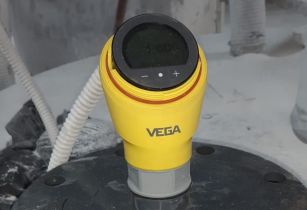Saline Water Conversion Cooperation (SWCC) Jeddah has ensured a steady production of freshwater by innovating and tackling down one of the most difficult measuring task: The level measurement of lime silos
The city of Jeddah is the largest in Makkah Region and the second largest after the Saudi capital, Riyadh.
With its population of 3.5 million people, and being a gateway to Mecca, Jeddah is facing one of the daunting challenges in water production and management.
To fulfil such a huge demand, especially during the peak seasons of pilgrims and religious meets, the city must produce more water than any other city in the kingdom. So Jeddah and the surrounding cities are responsible of smoothly operate an impressive number of desalination plants and units.
Gladly, Jeddah is known for being one of the most innovative city on the Middle East map.
Thus, in this context, the Saline Water Conversion Cooperation (SWCC) is constantly looking for the most reliable and state-of-the-art technology that can optimise the production of water and maintain the operation of their desalination plants.
As a senior instrumentation and control engineer in Jeddah?s RO plants, Mr Talal H. Althebiani mission is precise. To pull off this technology, he must find and install the best instruments which can monitor and control the processes in their plants. Recently, he stepped forward to solve a known worldwide issue, the level measurement in the dustiest silos of the plants, Hydrated Lime silos.
Hydrated Lime, in the form of a white powder, is used in water production to remove hardness, fluorite and to dissolve solids from water. It is also being used all around the globe in several other applications such as sugar refining, paper processing, fumes and gas treatment; and in industries like pharmaceutical, rubber, metallurgical and so on.
The difficulty of measuring and monitoring the level of this sticky, dusty material inside the silo is not something new to many engineers. Indeed, most of the measuring principles are either getting stuck, breakage, disappearing below a thick layer of build-up, losing signal or becoming ineffective because of the dust.
With this matter in mind, accompanied by his eagerness to unravel it, Engr. Althebiani approached the company, VEGA, a German manufacturer of level sensors and an ambassador of radar technology.
Radar technology has been around for decades now. It is slowly replacing the obsolete or underperforming technologies such as mechanical switches, electromechanical sensors (Yo-yo type) and even non-contact type technologies, like ultrasonic sensors, for example. Nevertheless, lime silos remained challenging because of the tough characteristics the product has. The sticky and dusty powder is attenuating the signal or can create false measurement (also called ?false echoes?).
Being the world leader in radar principle, VEGA developed a new type of high-frequency radars for solids, the 80 GHz level sensors. With no dead bands, a narrow beam angle of 4? to focus the emitted waves straight to the optimal measurement spot, an auto-adjustable sensitivity to measure through build-ups, a high dynamic range and thus a stronger and more reliable signal, the new 80GHz Radar has become the most appropriate technology here and so the choice of SWCC.
Engr. Althebiani installed the 80 GHz radar a few months ago and is now monitoring the lime stocks without any issue. The radar sensor, having no dead bands, allows him to peacefully instruct the operators to fill the 5m silos to the top; thus optimising and utilising the container to its full capacity.
From then on, lime storage silos are no longer a challenge for SWCC.





